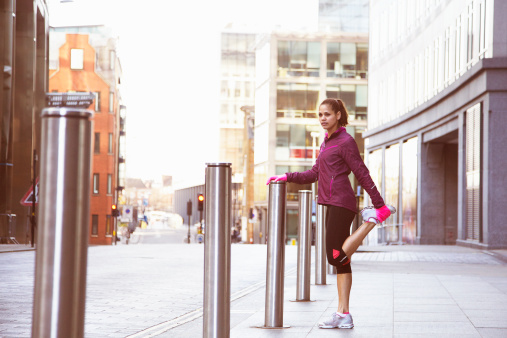What’s The Best Time Of Day To Workout?
There are benefits for both morning and evening workouts, so call on your natural body rhythms.
What’s the best time of day to workout? It’s a classic conundrum; once people have tackled the old “I don’t have time to exercise excuse (the “dog ate my homework” of reasons not to work out), the next question is, naturally, when to do it.
First of all, you need to find a time that works for your schedule, of course. But you also have to find a time that works for your body – and in order to that, you’ve first got to try and understand your body’s own natural energy cycles and rhythms. You’re probably familiar with the terms “larks” and “owls,” and probably know someone (maybe even yourself) who fits the classic description of a morning or night person. Truth is, though, most of us are not extreme larks or tend to rise somewhere between 7 and 8 A.M., get sleepy around ten at night, and fall asleep by midnight, with variations of up to an hour or two either way.
More important is the fact that, whatever hours we keep, we tend to follow a consistent pattern of energy and bodily function over the course of the day. This inner clock is governed by chemical processes in the human body that synchronize themselves to the light-dark cycle of the environment. Coming to terms with your cycle will help you in everything you do, including making your exercise schedule more consistent.
If you took your temperature every four hours around the clock, you would probably find that it rose and fell by a few tenths of a degree over a twenty-four-hour period. You’d also find that the periods of higher temperature would correspond with periods of higher energy and mental alertness, while the dips in temperature would correspond with sleep, or with that slump period during the day when you feel the need to rest and recharge.
The standard energy cycle for most of us is:
- Upon waking: Body temperature and metabolic rate rise.
- Midmorning: Highly alert. Best time for activities requiring critical thinking and concentration.
- After lunch/early afternoon: Energy and alertness plummet as body temperature drops. For many, an afternoon nap is a refreshing, natural response.
- Mid to late afternoon: Body temperature and energy rise again. Mental faculties return.
- Late afternoon: Metabolic peak; a good time to exercise and then eat dinner.
- After dinner, about two hours before bed: Energy and metabolism drops, melatonin levels rise, preparing us for sleep.
- Pre-dawn Deep sleep; body temperature is at its lowest. Studies show that one-vehicle accidents, as well as industrial shift worker accidents, happen during this period.
Most of us have an intuitive sense of our energy profile. Still, it’s uncanny how we try to fight it – to work, eat, or drive when we should be sleeping; or, conversely, to squander our most valuable brain time on activities that could easily be done during less alert periods.
So whether you’re an early bird or a night owl, there are benefits to working out during all times of day. Below are a few benefits for working out both in the morning and in the afternoon.
4 Benefits of working out in the morning:
- Amps up your metabolism in preparation for the day
- Balances blood sugar levels
- Improves focus and energy
- Workout is DONE for the day!
4 Benefits of workout in the afternoon:
- Transitions your day from afternoon to evening so you can de-stress after a long day
- Boosts mid-day energy levels
- Relaxes and rejuvenates you for the evening
- Easier to find a workout partner in the afternoon than early in the morning!
Knowing and, more importantly, respecting your body’s daily energy map is an invigorating way to make yourself more productive, improve the effectiveness of exercise, reduce the likelihood of accidents, improve your sexual performance, and, in general, increase your enjoyment of life. Here’s to your health!




Best time for me is 6pm after work, before dinner…long walk/run builds up appetite, relaxes after a hard day at work.